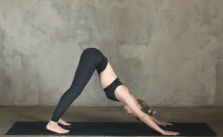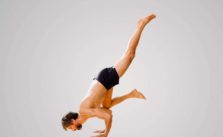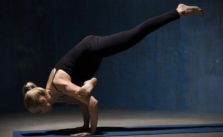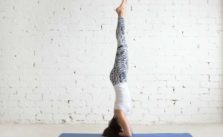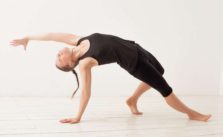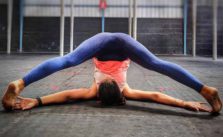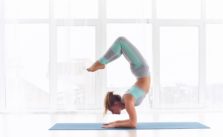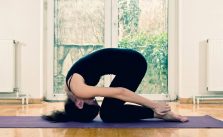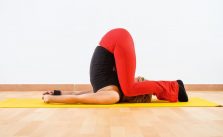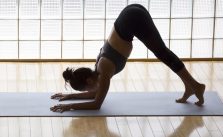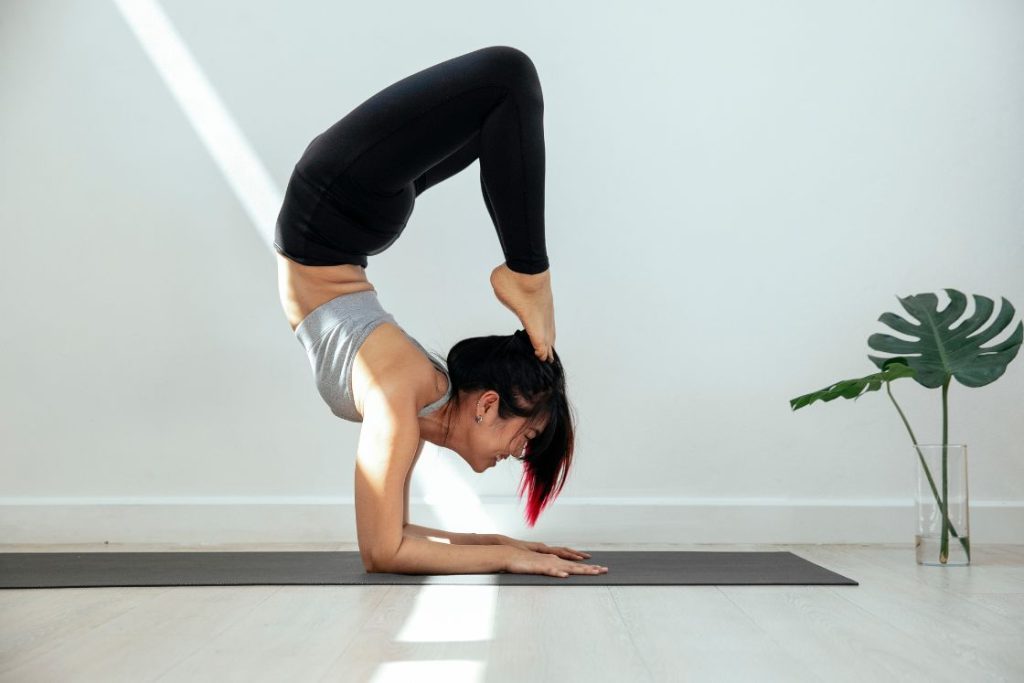
Yoga inversions are poses where the head is below the heart. It includes poses such as headstand (Sirasana), shoulderstand (Sarvangasana), and handstand, among others. Gravity behaves inversely in such postures; rather than moving everything toward the feet, it moves it higher toward the head.
Inversions help to reverse the effects of gravity, increase blood flow to the brain, and stimulate the lymphatic system. They are also believed to improve balance, concentration, and overall body awareness.
Inversion yoga poses assist to develop the core muscles, ease tension and stiffness in the shoulders and neck, tone the muscles in the back, hips, and pelvis, and offer stability to the shoulders and hips. These poses further aid in balancing the vayus, particularly the udana vayu, which naturally moves upwards.
List of Yoga Inversions
Inversion yoga poses involve any asana that brings the hips above the heart, inverting the body’s typical orientation. These poses are beneficial for improving circulation, boosting the immune system, and calming the mind.
There are 12 different inversion poses in yoga that we have listed below. Each pose includes step-by-step instructions, benefits, modifications, and precautions to ensure safe and effective practice.
Benefits of Inversion Yoga Poses
Your flexibility, circulation, vitality, and even self-esteem will all increase as a result of yoga inversion. Additionally, it is believed to encourage emotional development, calm the spirit and mind, direct energy toward the heart, and strengthen your bond with the earth.
Below are some major benefits of inverted yoga poses:
- Improve circulation: Inversions help improve blood flow and lymphatic circulation in the body.
- Boost immunity: By stimulating the lymphatic system, inversions can help boost the immune system.
- Calm the mind: Being in an upside-down position can help calm the mind and reduce stress.
- Improve balance: Practicing inversions can help improve balance and proprioception.
- Strengthen core muscles: Inversions require core strength and can help tone and strengthen the abdominal muscles.
- Increase upper body strength: Many inversion poses require upper body strength, which can be developed through regular practice.
- Improve posture: Inversions help lengthen the spine and improve posture.
- Increase focus and concentration: Being in an unfamiliar position can require more focus and concentration, which can improve these skills over time.
- Boost energy levels: Inversions can help increase energy levels by improving circulation and oxygenation of the body.
Tips to practice Inversion Yoga Poses
The following tips will help you perform inversion yoga poses safely and effectively:
- Start out easy with basic poses then progress to the more challenging ones.
- Strengthen your shoulders, neck, core, and other areas that need to be strengthened before moving on to the inversions.
- Make sure you won’t trip and fall. Inversions can be practiced alone, with a companion, or in a corner of the room where there is support on both sides of you. You may lay out a blanket around you to break your fall.
- If you have a medical condition like high blood pressure, cardiovascular problems, or glaucoma, consult a doctor before performing inversions.
- Refrain from challenging poses that entirely invert the body while pregnant. Similarly, menstruating women should also avoid such poses for the duration.
- Individuals with joint issues, neck or back injuries, or other similar problems shouldn’t practice inversion yoga without the doctor’s approval.
